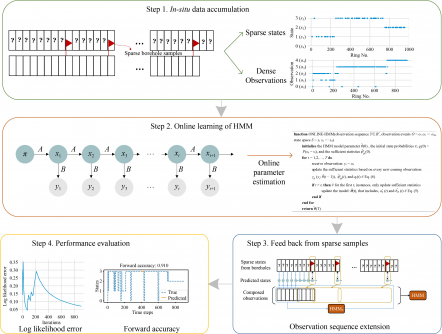In a significant advancement for tunnel construction, researchers have introduced a new model for predicting geological risks during excavation. The study, titled “Geological Risk Prediction Under Uncertainty in Tunnel Excavation Using Online Learning and Hidden Markov Model,” was conducted by a team from the School of Civil and Hydraulic Engineering at Huazhong University of Science and Technology and the School of Civil and Environmental Engineering at Nanyang Technological University.
Accurate estimation of geological risks is crucial to prevent geohazards such as collapses, water inrushes, and landslides. These hazards can lead to project delays, cost overruns, and severe safety incidents. Traditional methods of gathering geological data often fall short. For instance, invasive techniques like borehole logging can reach depths of up to 12 km but suffer from sparse sampling rates. Non-invasive methods, while offering high spatial resolution, often lack accuracy due to measurement errors.
The research team recognized that conventional machine learning approaches, such as long short-term memory (LSTM) networks and support vector machines (SVM), typically depend on large amounts of pre-existing data. Tunnel projects, which can span several years, generate data incrementally, making it challenging for these traditional models to adapt to new information. This gap in capability prompted the development of the online hidden Markov model (OHMM).
Introducing the Online Hidden Markov Model
The OHMM integrates online learning with the hidden Markov model, allowing it to update its parameters with each new data point. This adaptability is particularly beneficial in addressing uncertainties that arise as excavation progresses. Additionally, the researchers introduced an observation extension mechanism, which utilizes pre-construction borehole samples to supplement limited early-stage data. This approach extends short sequences of observed data to complete sequences that characterize geological risks in the tunnel coverage area.
To demonstrate the model’s effectiveness, the researchers conducted a case study on a tunnel excavation project in Singapore, which involved 915 rings of data. The results were promising. When compared to traditional methods, including standard HMM, LSTM networks, and SVM, the OHMM yielded superior performance in predicting geological risks ahead of the tunnel boring machine (TBM).
Results and Implications
One of the most notable findings was that the OHMM could accurately forecast geological risks in unconstructed areas using limited observational data. For instance, using data from 300 observed rings, the model achieved an impressive forward prediction accuracy of 0.968. Even when using 600 observed rings, the accuracy remained high at 0.902, significantly outpacing other modeling techniques.
The OHMM also demonstrated stable prediction capabilities for up to 100 rings ahead, leading the researchers to recommend a foresight distance of 30 rings for practical tunnel excavation guidance. This balance between accuracy and stability could greatly enhance safety and efficiency in tunnel construction projects worldwide.
The full text of the study, authored by Limao ZHANG, Ying WANG, Xianlei FU, Xieqing SONG, and Penghui LIN, is available for further review at: https://doi.org/10.1007/s42524-024-0082-1. This innovative approach has the potential to reshape how geological risks are assessed, ultimately contributing to safer and more efficient tunnel construction practices globally.
